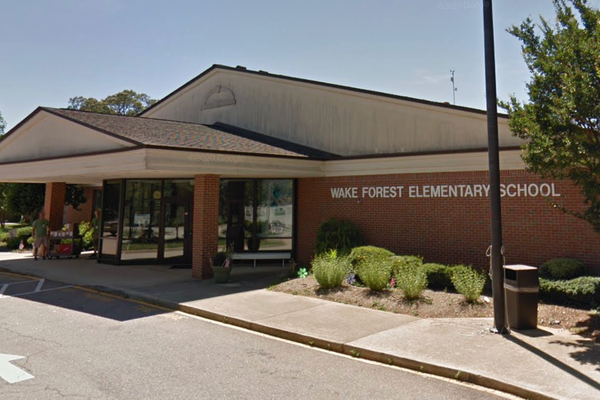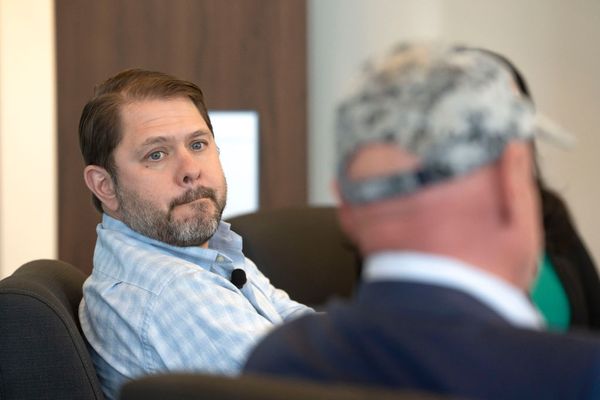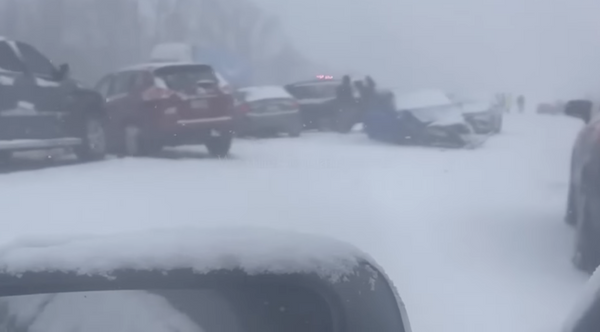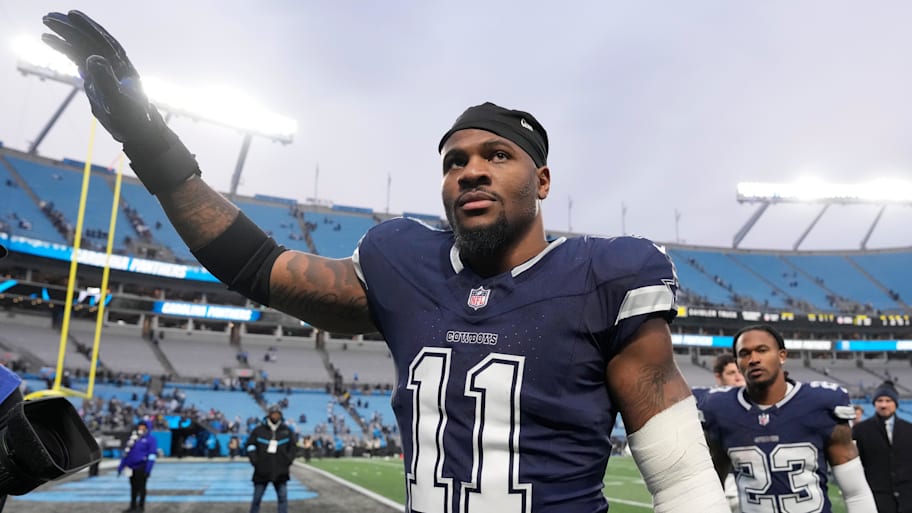
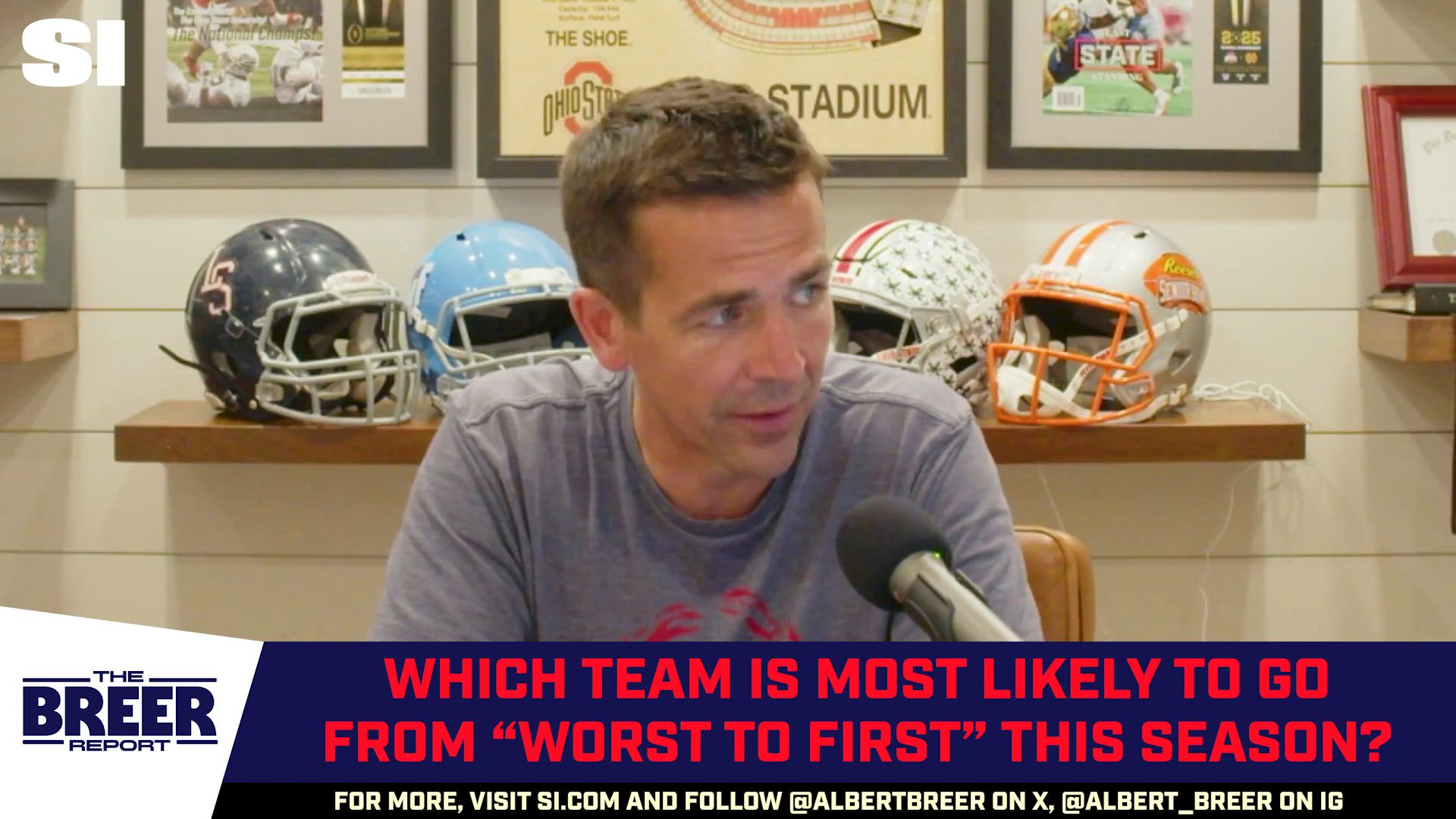
I’m coming back from vacation and NFL teams are, too. So we figured this week, we’d dive in like we did last year—with my takeaways focused on the 10 things I expect we’ll all be talking about when camps get into full swing next week. Let’s roll …
Micah Parsons
Will the Cowboys go through another summer-long contract dispute? If Micah Parsons stages a lengthy training camp holdout, that’d make four in seven years for the franchise. And, yes, the Ezekiel Elliott (2019), Zack Martin (2023) and CeeDee Lamb (2024) fights ended in resolutions. But the team wasn’t better for having gone through with it.
Interestingly, to this point, Parsons hasn’t been as militant as those other guys. He showed up for some of the team’s OTAs. He was there for the mandatory minicamp. He and new coach Brian Schottenheimer have, it seems, been on the same page throughout.
When Schottenheimer and I talked about the Parsons situation last month in generalities, he mentioned how they’d focused on trying to build up the relationship they’d already established when Schottenheimer was an assistant, so it’d withstand whichever way the business end of things took Parsons. “This relationship I’ve built with Micah,” he told me, “is very evident in the fact that anything I’ve asked him to do, he’s done. He’s been great.”
The trouble, of course, is that the bond they’ve built doesn’t necessarily make a negotiation any less complicated between a front office and an agent. Or change the fact that Parsons waited the extra year (or had to wait the extra year) to get his second contract, or mitigate that owner Jerry Jones said he’d never heard of superagent David Mulugheta.
What seems certain is that the average per year on Parsons’s contract will have to start with a four and the guarantees will have to be well into nine figures.
Whether that comes together via a holdout, or with less acrimony, remains to be seen.
Travis Hunter
How is Travis Hunter’s time divided? As rules have tightened on the on-field work players can do with coaches, through the past two CBA negotiations, the time everyone spends out there has been at more and more of a premium. Especially for young guys learning the NFL.
So in Hunter’s unique circumstances, it’ll be fascinating to see how new Jaguars coach Liam Coen divvies up the No. 2 pick’s work through July and August.
Jacksonville’s already on the record saying his baseline will be built first on offense, which matches the background of the new guys in charge. Coen is an offensive coach, and will be the Jags’ play-caller. GM James Gladstone comes from a Rams franchise that consistently invested in the receiver position, and, of late (post–Jalen Ramsey), had pulled back on what it was spending on corners.
And that is how the spring went. Hunter’s first three weeks or so after being drafted were devoted to playing offense and learning Coen’s scheme. After that, the coaches started to integrate defensive work into his days.
What’s really interesting is how different it is from Hunter’s setup at Colorado, and how just about every team I talked to predraft would’ve drawn it up for him. Over two years in Boulder, the overwhelming majority of Hunter’s meeting and practice time was spent on defense. That’s because it’s much easier to have things built in for a player without fully integrating him on offense than it is on defense—the offensive coaches would put in packages for Hunter and fill in the blanks by signaling in routes to him from the sideline.
Of course, that wouldn’t be the only way to do it. But it’d be hard, if not impossible, to start a guy on an NFL defense without that player spending a significant amount of his time preparing, on a week-to-week basis, for opponents on the defensive side.
It’s also important in camp to get rookies ready for the rhythm of the season, and so that month of camp should provide a window into how Hunter’s time will be spent once the regular season begins—which will, in turn, flow right into how he’s used on Sundays.
That’s why, even as a guy who normally thinks camp stat accounting can be a little asinine, I can’t wait to see how Hunter’s days are laid out in the coming weeks.
Browns’ quarterbacks
How are the Browns deploying their quarterbacks? Here are the first six weeks of the Browns’ schedule: Cincinnati, at Baltimore, Green Bay, at Detroit, Minnesota (in London), at Pittsburgh. That, if you’re keeping score at home, is five of last year’s playoff teams in a row, preceded by an opener against a team that was in the Super Bowl three years ago and has every right to believe getting back there in 2025 is on the radar.
I lay that out to say that there’s no soft landing in September through which the Browns can keep working their quarterback situation out. Time is short. Reps in camp will be valuable.
Bottom line: It wouldn’t be fair to the rest of the team to drag things out.
And to their credit, Kevin Stefanski, Tommy Rees and the staff have already been strategic about handling that. They know what Joe Flacco is, so they more or less sold him on taking a “first-round bye” through the spring, so they could get Kenny Pickett, Shedeur Sanders and Dillon Gabriel more reps. With the additional reps came more information, and I’d expect that information will help them divide reps with the starters.
To that end, you’ll probably be able to see where things stand early on. Flacco will be in the running. Pickett almost certainly will be, too. Gabriel showed an ability to process and great feel for the position, and looked improved in how fast he was playing early on—plus adds some athletic ability. How often his size shows up in 11-on-11 will be key. And Sanders was behind the pack to start, but worked to catch up and will have to continue earning his reps.
I’d guess Stefanski and Rees will want to narrow the competition early on, just to get the other guys on offense more work with quarterbacks who are truly in the running to lead the team as it navigates that brutal early schedule. There’s also the matter of what type of offense they’ll play—Pickett and Gabriel, for example, would have more elements keying on their athleticism than Flacco or Sanders would—that needs to be figured out.
And that’s without even considering what will happen whenever Deshaun Watson returns.
Yes, this is a complicated.
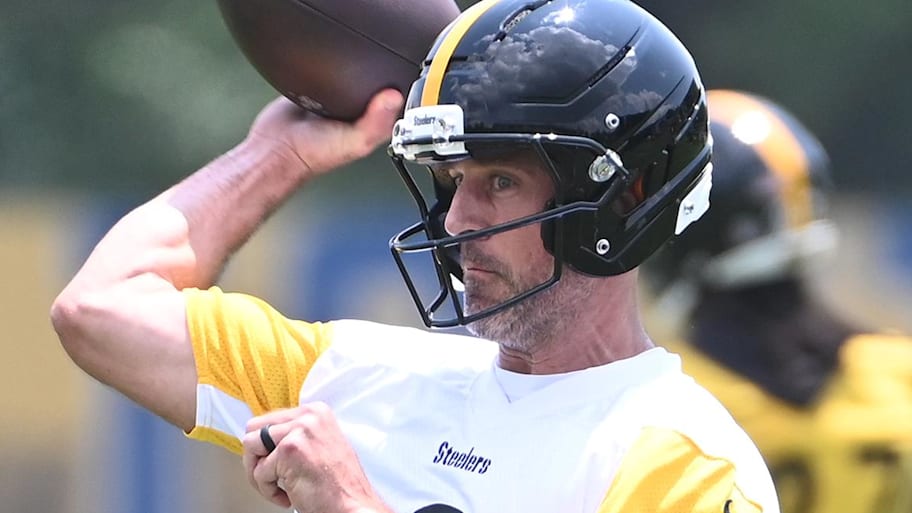
Aaron Rodgers
How is Aaron Rodgers fitting in? For the record, I think the answer will be “just fine.” The fit for the 41-year-old is markedly different from what he entered into as a New York Jet in 2023.
Back then, he was joining a team with a ton of promising young talent—from Quinnen Williams to Sauce Gardner, from Garrett Wilson to Breece Hall, from Alijah Vera-Tucker to Jermaine Johnson and Quincy Williams, the Jets were teeming with athletes. The idea, from there, was that Rodgers would be the agent of organizational change, and come in and raise everyone’s level, teach the young guys to win and … look out, world!
It obviously didn’t work out that way. And I actually think the Giants’ situation looking like a similar ask—with that roster’s promising, young talent needing the same sort of influence—may have pushed Rodgers further toward leaving New Jersey altogether.
Conversely, in Pittsburgh, he’s jumping on a moving train. No one else on the team is in his 40s, but the guys he’ll play with are much closer to being his peers. Five-time All-Pro Cameron Heyward is 36 and in his 15th season. Jalen Ramsey turns 31 in October, has made seven Pro Bowls and is a Super Bowl champion. Darius Slay is 34, a six-time Pro Bowler and just won a Super Bowl. Even 27-year-old DK Metcalf is heading into Year 7.
So, Rodgers is free to just come in and play quarterback. As for his appreciation for that, I’ll go back to a conversation I had with him last summer about his off-field pursuits, and how they fit into his chosen occupation.
“I was leaning into that so much, that I wanted so badly just to prove that I wasn’t just a football player,” he said. “The slight perspective adjustment I had was to lean into the fact that I am a football player. It’s pretty cool. Look how much it’s given to my life. The majority of the best friends in my life are from this sport. I’m the godfather to Randall Cobb’s kid because he got drafted in Green Bay. We played together. We have a deep, close relationship.
“The money, that’s given me the opportunity and the platform—the opportunity to travel to places I want to travel to and meet the people I’ve met. I am so thankful that I am a football player and that it has been my identity.”
Now, I think he’s in a place that’ll allow him to be that, and just that. Which, at least as I see it, should allow him to fit in seamlessly.
Washington Commanders
Are the Commanders true Super Bowl contenders? I can’t wait to see what Dan Quinn has coming for an encore after a 12-win regular season and an NFC title game in Year 1.
For their part, Quinn and GM Adam Peters have operated as if they are close to winning a championship, with trades for Marshon Lattimore (at the trade deadline) and Laremy Tunsil and Deebo Samuel (during the offseason), draining draft resources to fill premium positions with decorated veteran players. It’s something you can do when you’ve got a quarterback like Jayden Daniels on a rookie contract, but it also shortens your margin for error going forward.
So a big piece of how this goes will ride on Tunsil, Lattimore and Samuel playing big roles. Another will be how Terry McLaurin’s icy contract negotiation thaws out as we get closer to the start of camp. But the biggest piece lies with Daniels himself.
The Commanders didn’t suddenly become one of the NFL’s most talented teams last year. They got where they did by deftly filling out the middle class, becoming competent at positions where they’d been deficient, with a raft of veterans that had backgrounds with the coaching staff coming ashore via free agency—and by Daniels exceeding even the wildest ideas of what he might be coming out of the box as the No. 2 pick.
To try to build on that momentum, OC Kliff Kingsbury has streamlined the Commanders’ scheme, leaning into and building off what the offense, and primarily Daniels, did well last year. The idea was to get the most out of the spring, and now the summer, which makes all the sense in the world.
However, it is a high bar that Daniels set last year—3,568 yards and 25 touchdowns (against just nine picks) passing, and 891 yards and six touchdowns on the ground. The schedule this year is much tougher, with the NFC East drawing the NFC North and the AFC West in the rotation. The rest of the league now has a full season of tape on Kingsbury’s offense, too, and Daniels within it. In other words, this is tougher than just running things back.
Can Daniels make it happen? I think he can. But it’s not automatic.
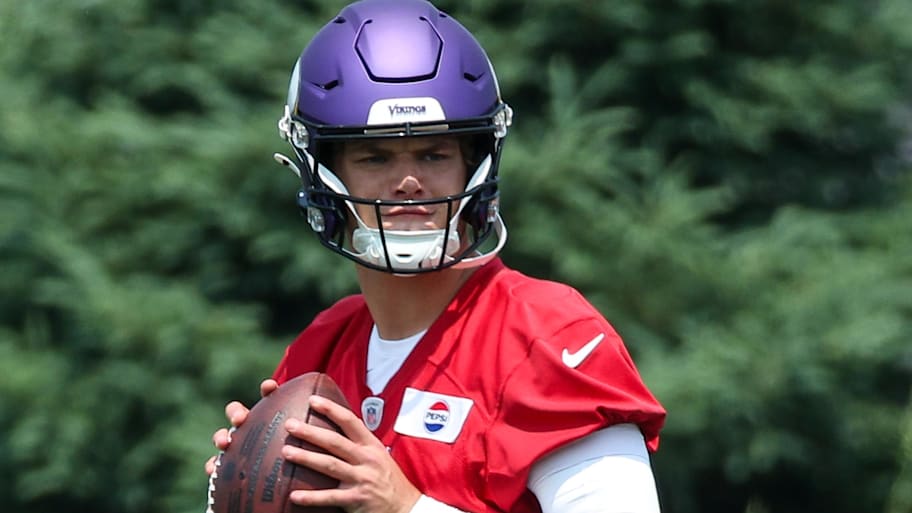
Second-year quarterbacks
What about the other second-year quarterbacks? Interestingly, of the group, we probably know the most about Bo Nix. I’m also not sure Nix gets the credit he deserves for how last year went—the Denver Broncos didn’t have a single Pro Bowler on offense, and only three alternates (tackle Garett Bolles, guard Quinn Meinerz and Nix himself)—and the quarterback was runner-up for Offensive Rookie of the Year for a playoff team.
Given Nix’s steadiness through last year, and the presence of Sean Payton, it’s fair to say of the non-Daniels 2024 draft quarterbacks, Nix has the highest floor.
Meanwhile, Chicago’s Caleb Williams and New England’s Drake Maye have new coaching staffs, new systems, and reworked personnel around them, Atlanta’s Michael Penix Jr. is getting his first real appointment as an NFL starter after last year’s extended cameo, and Minnesota’s J.J. McCarthy is set to pilot a loaded offense with a rebuilt line after missing all of his rookie year after knee surgery.
I actually think all five of them are positioned to have strong sophomore seasons. But history at the position tells us there’s almost no chance that all five of them make it to big second contracts in the NFL (with the class of 2020 being the ultimate outlier).
With that said, I’m fascinated to see what new coach Ben Johnson does with Williams; how Joe Thuney, Drew Dalman and Jonah Jackson invigorate that line; and how rookie tight end Colston Loveland integrates into an already strong skill group. I can’t wait to see how Josh McDaniels deploys the hyper-gifted Maye, whether No. 4 pick Will Campbell can fix the Patriots’ left tackle problem, and how Stefon Diggs fits into the offense. I’m excited, too, to see whether the Matthew Stafford comps Penix has drawn from the Falcons’ Rams-centric staff are legit, and how McCarthy responds to all the adversity that impacted him as a rookie—and where he can take Justin Jefferson & Co.
It’s interesting, too, because the benefit of the doubt a lot of these guys got as rookies is now gone. It really is already go time for all of them.
NFC West
Who’s the heavyweight in the NFC West? The Kyle Shanahan/Sean McVay rivalry, now in Year 9, has been a gift for everyone who follows the NFL. Not only are the two innovative in how they’ve built their offenses and teams—and producers of habitually entertaining, dynamic outfits—the stakes seem to be unendingly high out there.
Between the two of them, we’ve seen four Super Bowl appearances and a championship, and each has been able to rebuild his roster on the fly and show real staying power.
This year, for the Rams, there’s no Cooper Kupp. It’s been a year since Aaron Donald left, and two since Jalen Ramsey was dealt. In their places has come an exciting young core that’s reinvigorated not just the franchise’s future, but also the coach himself. And GM Les Snead and the brass is telling you where they are with Puka Nacua, Kyren Williams, Jared Verse, Byron Young, Kobie Turner and Braden Fiske et al., in adding a win-now piece like Davante Adams after making the playoffs the past two years while cleaning out the cap.
Meanwhile, the 49ers are taking their cap medicine this year like the Rams did two years ago, with guys such as Samuel, Javon Hargrave, Leonard Floyd, Dre Greenlaw, Charvarius Ward, Talanoa Hufanga and Aaron Banks gone. The core is still strong—a lot of teams would love to be building around Brock Purdy, Christian McCaffrey, Brandon Aiyuk (when he gets back), Trent Williams, Nick Bosa and Fred Warner. But how far this team goes will ride on young players growing up like the Rams’ young guys did the past few years, and a decent bet that’ll happen based on the track record of GM John Lynch and Shanahan.
Either way, it would be no surprise to see either or both of these teams still going in late January, so it’ll be fun to watch how that’s all coming along through the summer, with the Seahawks and Cardinals also (justifiably) expecting to take steps forward in the division.
Bengals’ contracts
The Bengals’ contractual entanglements. On one hand, Cincinnati already signed a couple of monumental contracts this offseason, and they were aggressive in getting both Ja’Marr Chase and Tee Higgins signed before either situation could get nearly as contentious as things were last year. They deserve credit for that. On the other hand, camp starts next week and a defense with a new coordinator has two disgruntled pass rushers.
The Trey Hendrickson situation remains, I’d say, unpredictable. This is the third consecutive offseason that Cincinnati’s been here with a player who’s posted 35 sacks over the past two years. He will turn 31 in December. He got a one-year Band-Aid of an extension in 2023 to make up for the COVID-19 discount the Bengals got on him in ’21, and no adjustment last year. So it seems pretty unlikely he’s going to be cutting the team any breaks.
Further complicating things is that Chase got a deal that broke previous Bengals precedents on guarantees, but Higgins’s contract really didn’t, and that Myles Garrett pushed the top of the market at Hendrickson’s position to $40 million per year, while Danielle Hunter and Maxx Crosby got the market for third-contract types into the mid-30s this offseason. So there’s a lot of ground to cover there, even if there wasn’t the history that’s present with this one.
Then, there’s rookie Shemar Stewart’s status—he’s still unsigned and fighting over default language tied to the guarantees in his contract. That one, it seems, has turned into a staring contest, with Stewart unwilling to allow the team to set a new precedent in his contract that could be bad for guys down the line.
In the backdrop of all this is Joe Burrow, who’s stridently supported his teammates in these situations, and has done a lot to help change the face and image of the franchise.
The Bengals, for their part, also expanded their scouting department, which has long been the league’s smallest, this offseason. So between that, and the monster contracts that Burrow and Chase signed, there has been an effort to change on the team’s part. How far will that go? The Hendrickson and Stewart situations might show us.
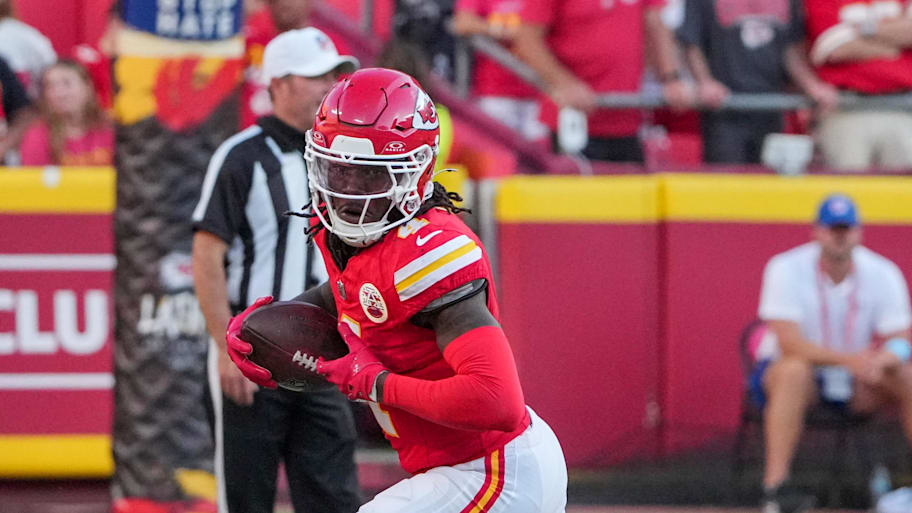
Chiefs’ offense
How are Patrick Mahomes and the Chiefs offense looking? Thanks to Kansas City sports radio, there’ll be some focus on how the three-time Super Bowl MVP looks physically going into camp—and a lot of people trying to define the word “fat.” Once we’re past that, I’d see the more legitimate topic of where Kansas City’s offense is headed taking center stage.
I’m on record as saying I think the Chiefs could be significantly better this year than they were in the playoffs on that side of the ball.
For one, the tackle situation should be improved from where it was in January and February (and all of 2024). I don’t know what combination of holdover Jawaan Taylor, free-agent signee Jaylon Moore and first-round pick Josh Simmons will start. But I do know that Moore was a very steady stand-in for the Niners the past few years, Taylor’s fine (if still maddeningly inconsistent) and Simmons is brimming with potential.
Then, there’s the big-picture vision for last year’s offense that never played out because of injuries to Marquise “Hollywood” Brown and Rashee Rice. Brown and Xavier Worthy barely got to play together last year, Rice and Brown didn’t play together at all, and the team has high hopes for all three—with a belief that Rice (pending NFL discipline) has a shot to ascend to the elite class of receiver this year. So the idea that Brown and Worthy could effectively clear space for Rice and Travis Kelce to run through underneath remains intriguing.
Enough that I think even if Kelce takes a step back, and Noah Gray has to take a more prominent role in the offense (look out for rookie Jake Briningstool as a camp dark horse, too), the Chiefs still could be better on that side of the ball.
Of course, because everyone’s a prisoner of the last thing they saw, not many folks are looking at Kansas City this way. I think they should be.
NFLPA drama
And, finally, the NFLPA drama figures to bleed well into camp, if not all the way through the summer. The collusion case—which had findings that should be grounds for the union to throw an anti-ownership parade—has officially become a mess for the players association.
Even with the arbitrator ruling in favor of the NFL, the details that emerged through the discovery process (and brought to light by Pablo Torre and Mike Florio) were a really bad look for the NFL, from the direction teams got from the management council at a 2022 owners meetings, to the impact it had on deals for Russell Wilson and Lamar Jackson, to the text conversation between Cardinals owner Michael Bidwill and Chargers owner Dean Spanos … there was plenty to chew on.
The NFL’s desire to bury all the facts under a confidentiality agreement is self-explanatory. The NFLPA’s cooperation with that effort was suspicious, at best.
Why? Well, the strongest rumblings I’ve heard involve the NFL threatening to pursue $12 million spent in legal fees to win the case (ESPN’s Don Van Natta and Kalyn Kahler wrote about this last week)—using that as leverage to land confidentiality on the findings in the case, and to get the union to put its sword down on an appeal. However all that went, and there’s a question over whether the NFL is even entitled to the money, the NFLPA went along with it.
Making things even murkier is NFLPA executive director Lloyd Howell’s work as a paid consultant with a private equity firm approved by the league to buy a part of a team, which would give Howell some motivation to play nice with the owners.
So, now, you have a relatively new executive director in a place where there’s an appearance that he was compromised at a time when the union had information that could create a huge problem for the league and the owners. On Sunday, the NFLPA got word out that it stands behind Howell, but there have been back-door machinations going on for more than a week that would indicate people tied to the union are bracing for potential changes.
Add it up, and my guess would be that the story some folks in my line of work were reticent to talk about will get bigger before it goes away.
And, yes, I know a lot of you reading this just want your football this time of year. I don’t blame you. I’m excited for that, too. But this story’s an important one to cover—along with the rest of the (more fun) things we covered above.
Happy (almost) training camp, everyone!
This article was originally published on www.si.com as Takeaways: 10 Things We’ll Talk About When NFL Training Camps Start.

